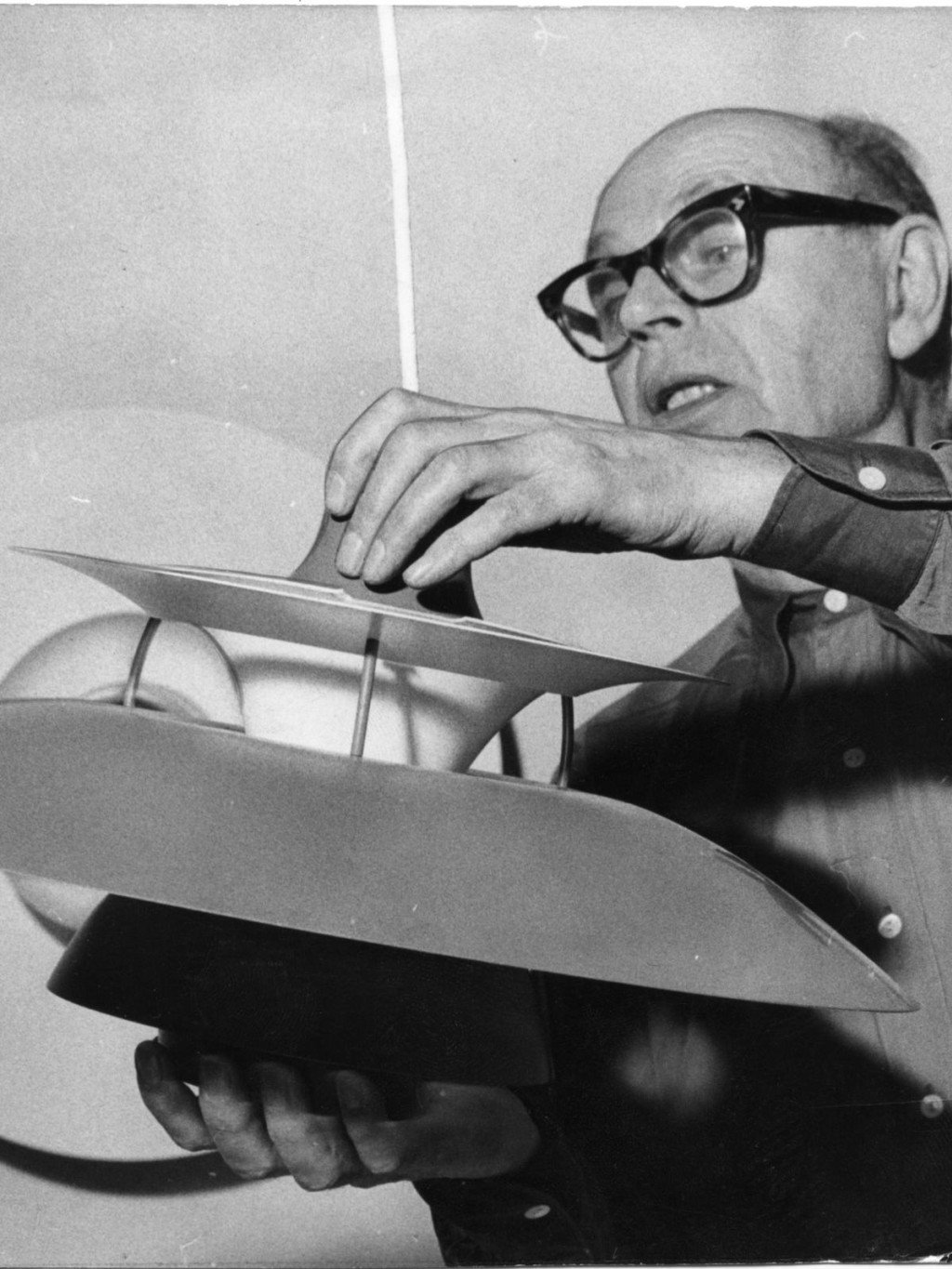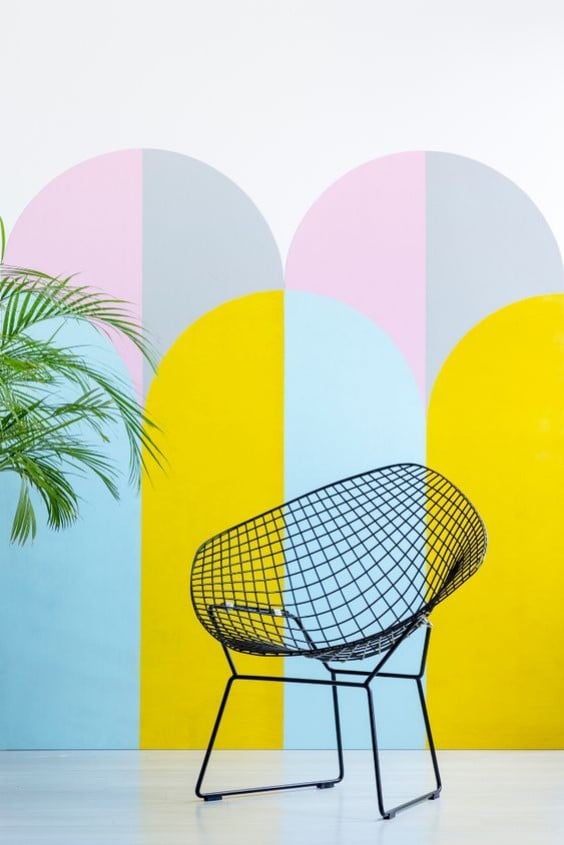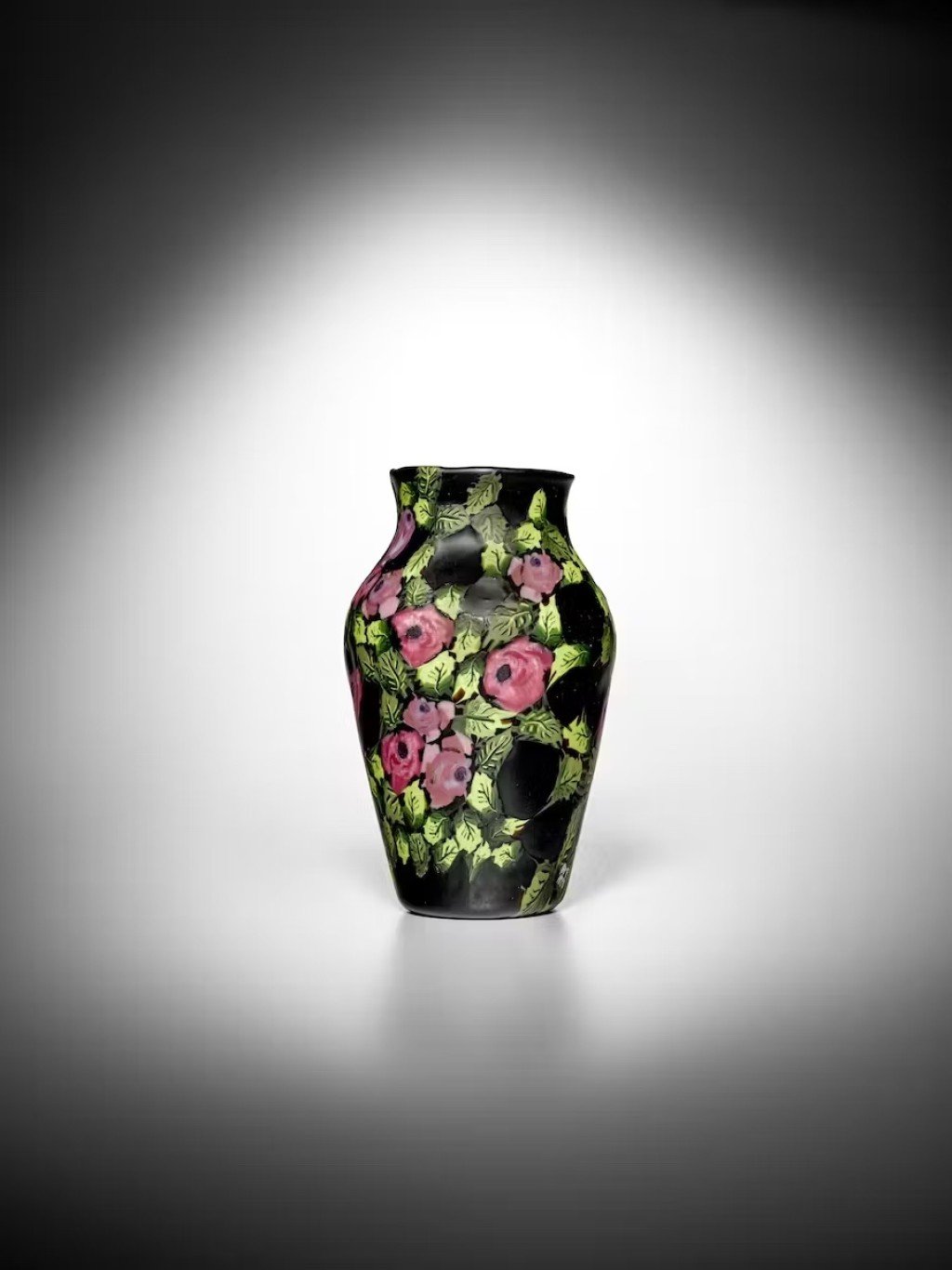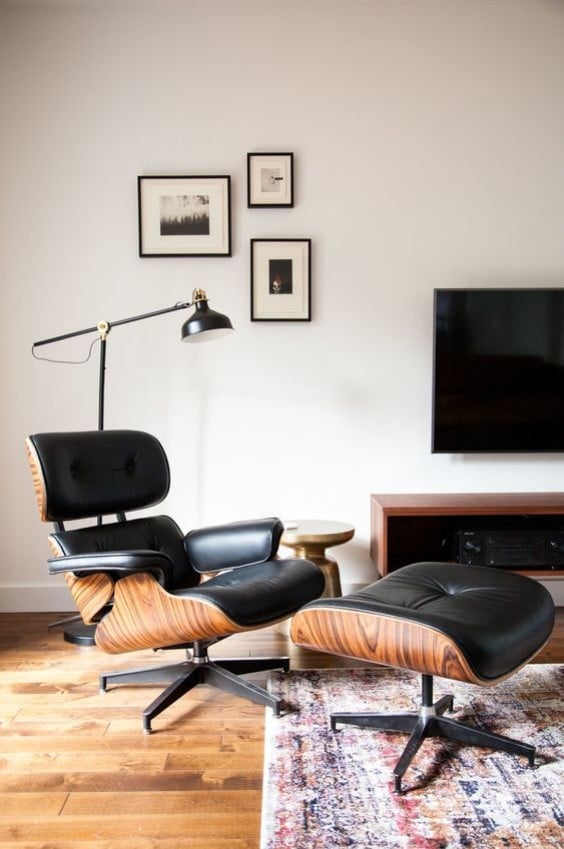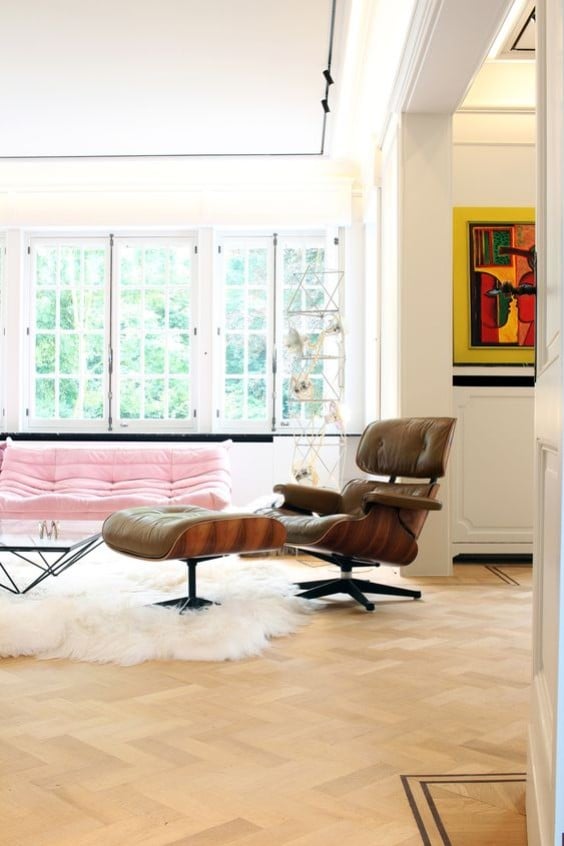The Danish way of living is celebrated worldwide. The term "Hygge", which belongs only to the Danes, defines a way of life in which the interior is warm and cozy. A generation of Danish architects and designers embodied this concept to impose Danish design on the international scene after World War II. Their names are Hans WEGNER, Arne JACOBSEN, Borge MOGENSEN, Verner PANTON, for the best known. Focus on these exceptional designers who shaped the golden age of Danish design in the 50s and 60s.
Architect and furniture designer, Kaare KLINT (1888-1954) is considered the father of modern Scandinavian design. He was responsible for the transition from Danish decorative arts to the world-famous design that exploded in the 1950s. Rather than turning to the cold aesthetics of the Bauhaus, KLINT continues the Scandinavian tradition of very high quality cabinetry combined with simple and functional forms: a return to craftsmanship, but with the desire to create practical, correctly sized and therefore comfortable furniture!



Kaare KLINT was appointed director of the new School of Furniture Design in Copenhagen in 1924, as part of the architecture section of the Copenhagen Academy of Fine Arts. He was to train a good part of the golden generation of Danish design in these avant-garde ideas...
Among them, its most gifted representative was undoubtedly Hans WEGNER (1914-2007). Trained by the master cabinetmaker Stahlberg, without a diploma, since he did not finish his studies at the School of Arts and Crafts in Copenhagen, WEGNER worked directly with the architects Erik Møller and Arne Jacobsen, then founded his design studio. His breakthrough came with the design of the Round Chair, which was featured on the cover of American Interiors magazine in 1950 and was named "the most beautiful chair in the world". The whole world then discovered the genius of Danish design, which ushered in 2 exceptional decades that marked its golden age.



The Danish designers' preference for imagining functional, well-proportioned - Kaare KLINT's obsession with measurements - and comfortable furniture goes hand in hand with curved, enveloping lines. The architect and designer Arne Jacobsen (1902-1971) is the one who will push the furthest the research for an organic design, in opposition to the geometric aesthetics of the Bauhaus theories. At the end of the 1950s, to furnish the lobby and reception areas of the Royal Hotel in Copenhagen, Arne Jacobsen created 2 iconic chairs that would become famous for an organic style that diffused a warm and cosy atmosphere: the Swan chair and the Egg chair.


Borge MOGENSEN (1914-1972), a close friend of Hans WEGNER and born the same year as the latter, designed simple, elegant and functional pieces of furniture, in the straight line of design taught by Kaare KLINT. His career is marked by his collaboration with the Danish publisher Fredericia Stolefabrik, which began in 1955. If the Danish design takes off in the 50s, it also owes it to publishers and manufacturers particularly inspired. Among the best known are: Fritz Hansen - 1872, Louis Poulsen - 1874, Søborg Møbelfabrik - 1890, Carl Hansen and Søn - 1908, FDB Møbler - 1942, PP Mobler - 1953. All have worked closely with the country's best designers. Together with WEGNER and JACOBSEN, MOGENSEN raises Danish design to an international level.




Another renowned Danish designer, Finn JUHL (1912-1989) is known for his furniture pieces with a clean-cut design in the extreme, making him less popular than his peers, WEGNER and MOGENSEN. And yet, his seats are of a rare elegance... He is credited with introducing and popularizing Danish design in the United States, where he taught.


Finally, one cannot evoke the golden age of Danish design without mentioning 2 singular figures: Poul HENNINGSEN (1894-1967), a contemporary of Kaare KLINT, and Verner PANTON (1926-1998), the enfant terrible of Danish design. The first illuminated a large part of the previous century with an uncommon science of lighting. The latter marked the 1960s with his whimsical and psychedelic universe, very colorful, taking full advantage of the arrival of plastic materials in the furniture industry.


Any Dane will tell you: lighting designer Poul HENNINGSEN is a legend in his country. There is hardly a domestic interior that does not have at least one lamp from the PH series designed by this architect, but also writer. Faithful throughout his life to the Danish publisher Louis Poulsen, Poul HENNINGSEN created more than a hundred lamps for the "PH" range. The designer's avant-garde idea lay in the design of multiple shades and diffusers to provide warm, diffused light.


While Poul HENNINGSEN and Verner PANTON offer less conventional design than their illustrious compatriots, their creations all have perfect proportions. A know-how that Kaare KLINT, master of the treatment of proportions, could not deny... Elegance, simplicity of form, ergonomics and functionality, these are the essential traits of post-war Danish design which still continues to inspire designers around the world.
François BOUTARD

